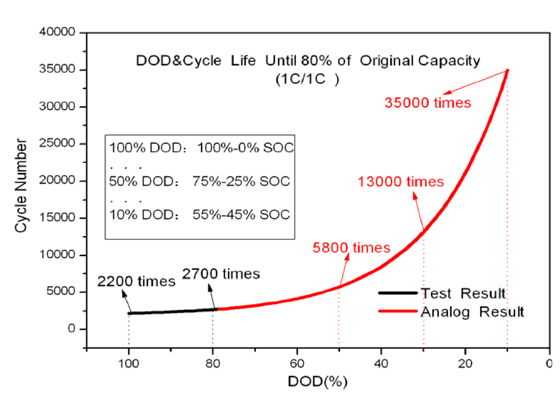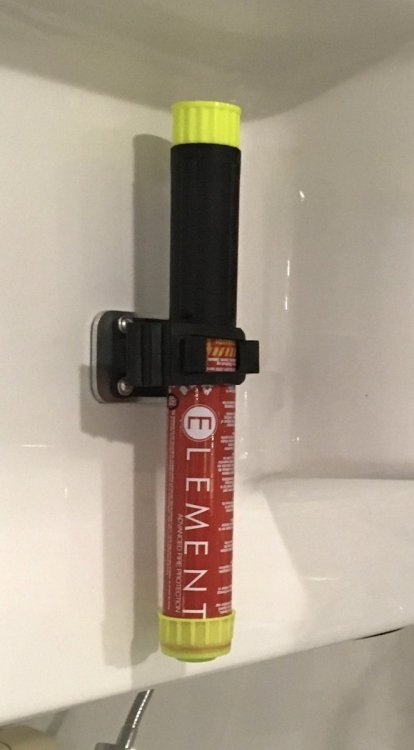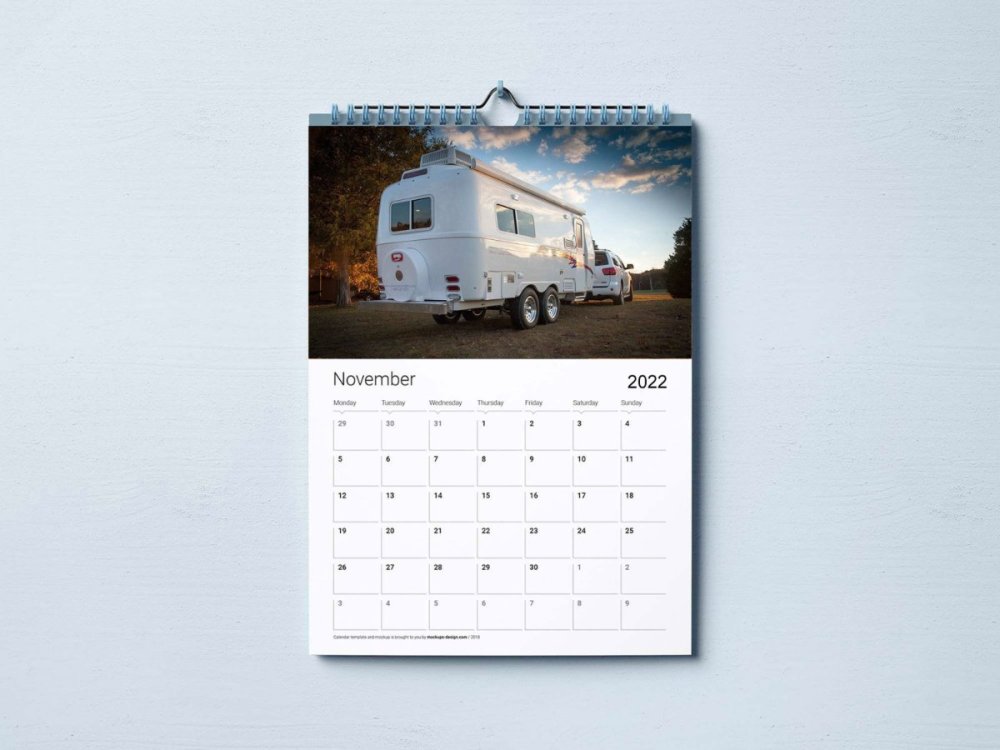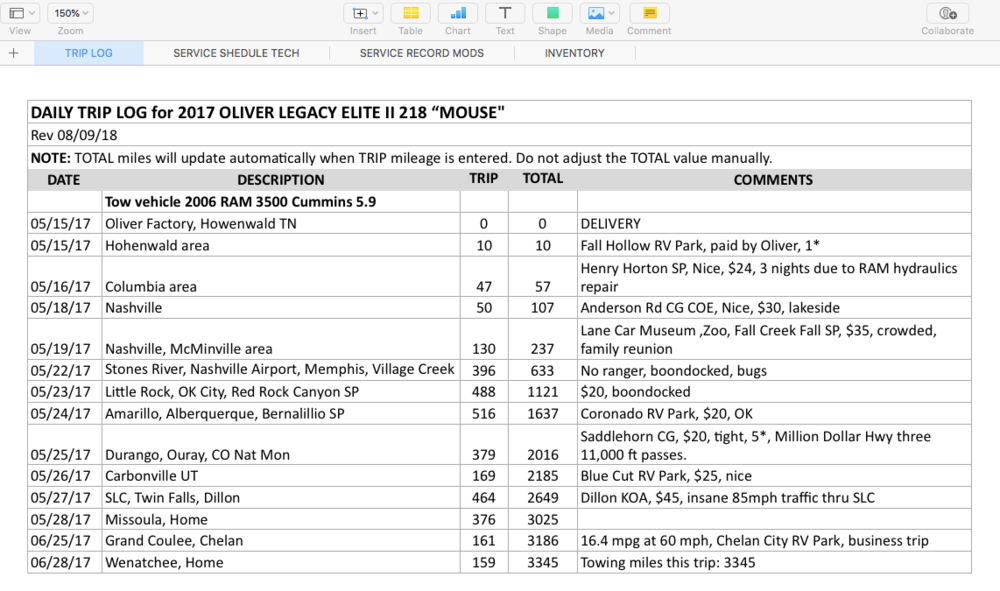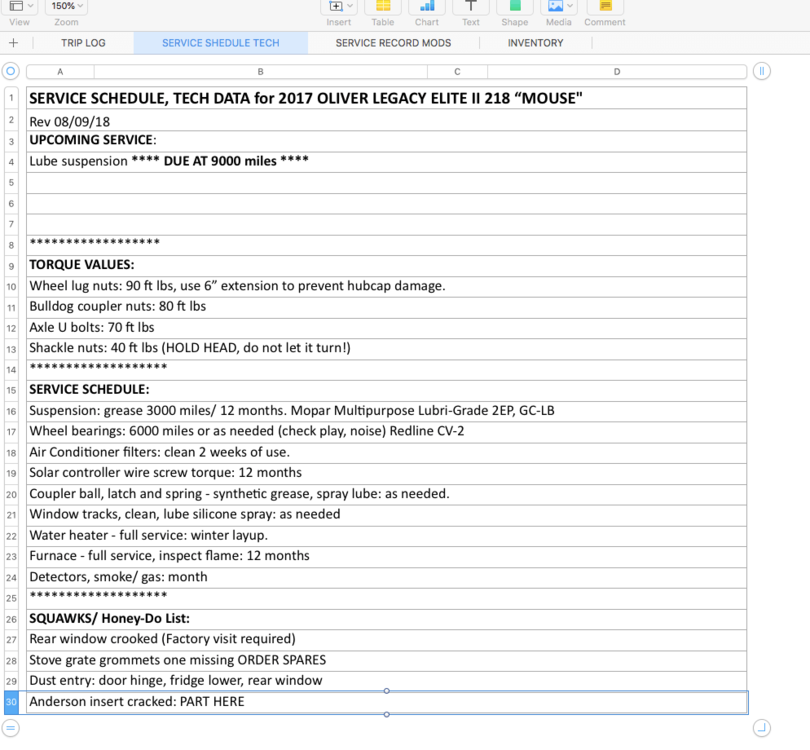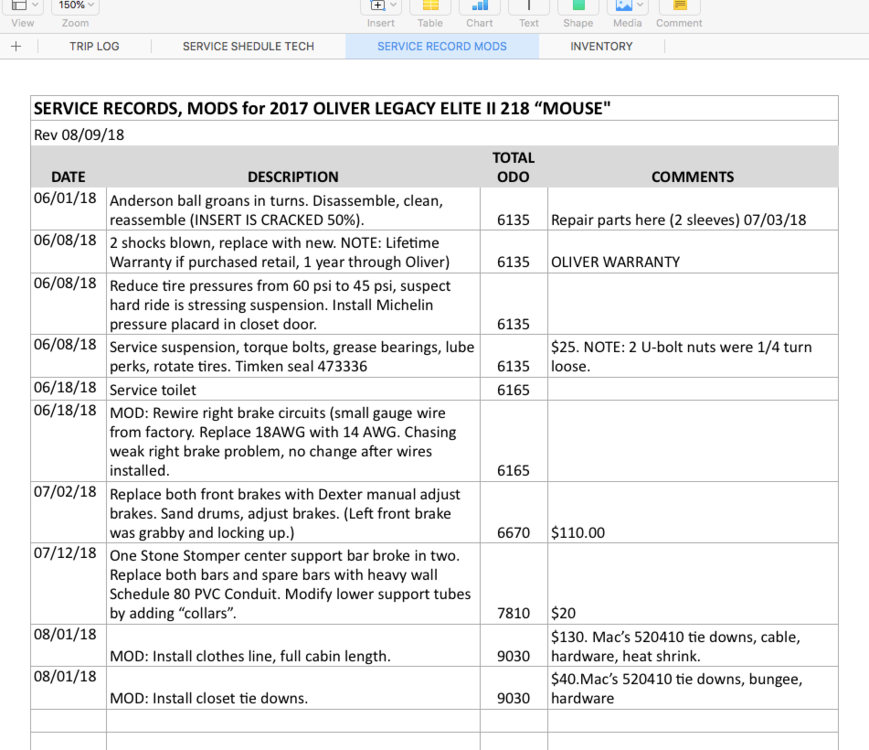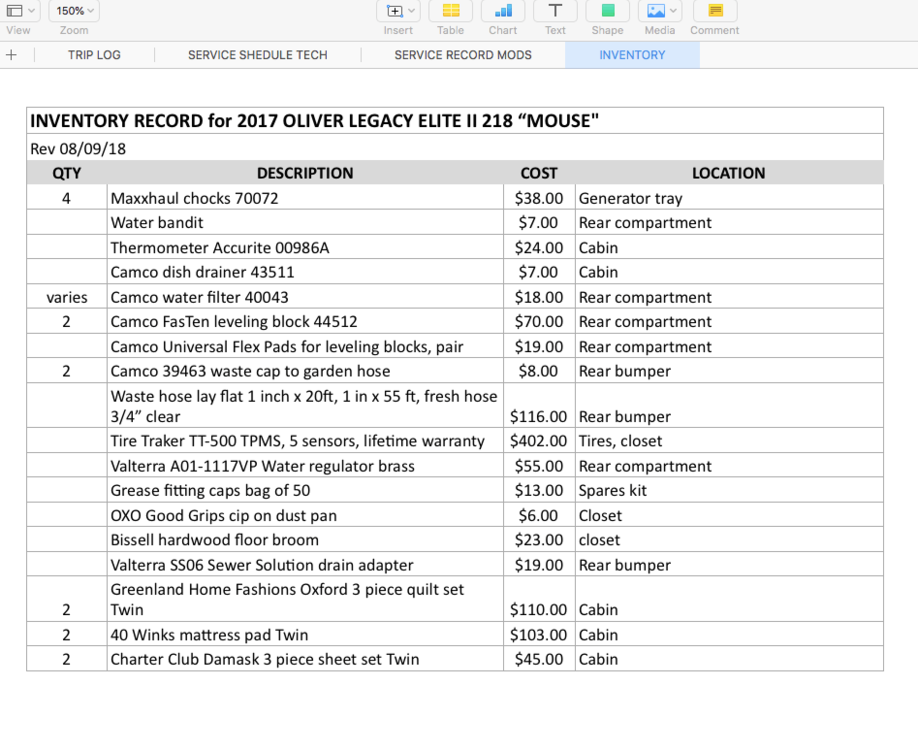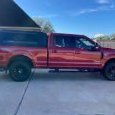Leaderboard
Popular Content
Showing content with the highest reputation on 11/04/2021 in Posts
-
There have been numerous posts in this forum about Oliver’s lithium battery systems—about their usefulness, limitations, and value with respect to cost. Despite reasonable arguments against it, a number of us have purchased the lithium package. Reasons for purchasing the option have included the ability to run the air conditioner (A/C) for short durations (like at highway rest stops), greater usable energy (more boondocking in cloudy weather without needing a generator), faster charging, and longer battery life. This post summarizes things I’ve learned over the last 6 months about the Xantrex/Lithium/Zamp system. This post might also be titled “Things I Wish I’d Known from the Start.” This summary is a work in progress. Hopefully, with your corrections and additions, this thread will be of use to others that have purchased the Lithionics option or are considering doing so. At the time of this writing, manuals and other information for the Lithionics batteries are in the Service Center Knowledge Base — see links at the end of this post. I assume at some point Lithionics information will be compiled with all of the other trailer manuals in Oliver University. Battery State of Charge A key component of the Lithionics system is the app that lets users monitor State of Charge (SOC) and voltage (see links below). The reliability of the SOC values (which describes the amount of energy remaining in the battery) depends on (1) maintaining SOC calibration and having (2) up-to-date Lithionics firmware. The SOC should be near 100% at 13.6 volts, and about 50% (+/- about 10%) at 13.2 volts. If this is not what you’re seeing on the Zamp controller, Xantrex remote, or Lithionics battery app, then something’s wrong. By way of example, a couple times we’ve experienced the SOC readings of 60% when the batteries were dead -- not good. Note that the voltage reading on the app while there is a load on the system (e.g., electric heater) is different than when there is no load; the “resting” voltage may be higher. SOC Calibration The SOC requires periodic calibration. According to the manual for the 130 Ah batteries, the SOC can be calibrated simply by charging the batteries to 14.4 volts. The manual also states that fully charging the batteries to 14.4 volts should be done at least once every two weeks for battery life. Get the 130-Ah battery manual from Lithionics using the links below; at the time of this writing, Oliver has the incorrect manual posted in the Knowledge Base). When charging with shore power, it is not always apparent that the batteries have reached 14.4 volts, because when charging, the batteries only stay at ~14.4 volts for a short while before dropping back to about 13.6 volts. You can verify that batteries have reached 14.4 volts by monitoring battery voltage using the Lithionics app during a charging event. If you are unsure that the batteries are reaching 14.4 volts, you can at least confirm that the Xantrex charger/inverter is set to charge to at least 14.4 volts in the Xantrex app (https://support.olivertraveltrailers.com/portal/en/kb/articles/xantrex-remote-bluetooth-pair-operation) and, under Settings, check the custom absorption voltage. Ours came from the factory set at 14.6 volts, which is sufficiently high to get the batteries to 14.4 volts. Lithionics Firmware At least some of us that picked up our trailers in spring or early summer have batteries with outdated firmware. As I understand from Lithionics, more recent firmware versions have an improved SOC algorithm (our initial SOC readings were unreliable). You can check firmware version with the Lithionics app by clicking on a battery, then clicking on the settings “sprocket” in the upper right side, and then clicking on firmware. Our battery came with firmware version 1.0.05; I’ve recently updated to 1.0.07 by clicking on flash firmware. This has to be done with your phone in close proximity to the battery, and has to be done separately for each battery. Updating firmware comes with a “…this is a critical operation…” warning; you might want to check with Oliver or Lithionics if you have any questions about doing this. Has updating firmware improved our SOC readings? I’m not sure yet, but I think so. So far, the readings seem more reliable, but I’m still testing. SOC Calibration by Cycling A Lithionics rep told me that the SOC can be calibrated by “cycling” the batteries, and that this should be done every two months. Cycling consists of discharging the batteries to reserve voltage (e.g., ~12.1 volts) and then charging to 14.4 volts. However, the rep could not point to written documentation supporting this form of calibration. As the batteries support more partial cycles than full cycles (see graph below), calibrating by simply charging to 14.4 volts (assuming this effectively calibrates the SOC) seems better for battery life. Lithionics batteries will not charge from tow vehicle The standard 7-pin connection from tow vehicle to trailer cannot be used for charging the Lithionics batteries. Charging the batteries from the TV requires a DC to DC charger, which is an aftermarket installation. For more discussion on this, search for John Davies’ Redarc DC-to-DC charger installation description. Batteries Turn Off Twice now one or two of the three 130-Ah batteries have turned off when reaching low voltage (which happened because we were relying on incorrect SOC values). The SOC readings themselves looked OK, but the voltage did not correspond with SOC. The battery State in the Lithionics app reads “Off” for each battery when it is off. There is no flag on the Zamp or Xantrex control panel that alert the user to one or two batteries being off. The lesson (at least for me): monitor all three batteries, not just one, and note the Current, Power, State, and Status Code settings. If one or more batteries are off, turn the battery(ies) back on, and fully charge to 14.4 volts. Inverter Noise The Xantrex charger/inverter can be noisy charging the batteries with shore power (I’ve measured 60-64 decibels in the cabin when batteries are charging, and about 72 decibels adjacent to the inverter). The noise comes from (1) the charger/inverter fan and (2) the way in which the inverter is mounted (the fiberglass wall to which the inverter is mounted propagates noise into the cabin). The noise can be masked by turning on the A/C. Alternatively, the noise level can be reduced somewhat by lowering the charger current. In the Xantrex app, go to settings, and change the Charger Current from, for example, 100 amps to 30 amps. This will reduce fan noise. It will obviously take longer to charge the batteries with lower current. If you would like to be connected to shore power (to run an electric heater or the A/C, for example), but not charge the batteries (to avoid keeping them fully charged for long periods of time, or to reduce inverter noise) you can set the charger ignition control in the Xantrex app settings to “auto-on” (thanks to NCEagle for figuring this one out). In this mode shore power energizes the 110 outlets, the A/C, and the fridge, but does not charge the batteries. Turn the charger ignition control “off” to resume charging batteries with shore power. There are likely ways of re-mounting the inverter so that noise does not propagate into the cabin, with either a different mounting location or perhaps mounts using rubber bushings. Has anyone tried this yet? Xantrex Communication Errors Too often, I’ve gotten “Code 20” communication errors on the Xantrex remote panel. This can be resolved by pushing the red button on the 300A breaker under the streetside bed, waiting for at least 30 minutes, and then pressing in the little red flag on the breaker. Yes, this is a pain (I wish this breaker were more accessible), but it usually resolves the issue. Leaving the Xantrex inverter on battery mode for 25 hours or more will result in the Code 20 communication error. The time limit can be changed in the Xantrex app, but cannot be lengthened to more than 25 hours. As long as the inverter has not timed out, turning the inverter off and then on again at the remote panel resets the 25-hour time-limit clock. Battery Storage Lithionics provides guidance for storing the lithium batteries (see link below). Long term storage can include lowering the SOC to about 50%. Discharging to the appropriate SOC can be accomplished by turning on an electrical load (e.g., A/C or space heater) while in battery mode and monitoring frequently. Theoretically one could set the inverter cutoff voltage (in the inverter app, under settings), to something like 13.2 volts, but the highest cutoff-voltage option is 12.8 volts. Lithionics recommends keeping a log of SOC and voltage readings prior to and after storage for warranty purposes. ------------------------ Hope this helps. Again, please correct any errors that you see, and please add your observations and tips. Fritz ------------------------------------------ Relevant Links Lithionics battery app: https://support.olivertraveltrailers.com/portal/api/kbArticles/386680000012415191/locale/en/attachments/lpqvx861bbc9c842d48f7995281b07d0a193d/content?portalId=edbsnfe5dceb1ade7571879ff200cb63e14a94b62f48e3338c31a6401acd00130b0bc&inline=true). Lithionics battery manual: At the time of this writing, the Oliver Knowledge Base has links to Lithionics manuals for 125 Ah and 320 Ah batteries. However, our LE2 has three 130 Ah batteries as part of the 390-Ah package, and the manuals for the 125-AH batteries and the 130-Ah batteries are not the same. A manual for the 130 Ah battery can be found on the Lithionics website: https://lithionicsbattery.com/wp-content/uploads/2018/12/12V130-G31LRBM8-Battery-User-Guide-R1.pdf. Lithionics Storage Procedure https://support.olivertraveltrailers.com/portal/api/kbArticles/386680000012415191/locale/en/attachments/lrotz3ebee5a7020f42a58eb0d4db18a41356/content?portalId=edbsnfe5dceb1ade7571879ff200cb63e14a94b62f48e3338c31a6401acd00130b0bc&inline=true Lithionics FAQs https://support.olivertraveltrailers.com/portal/api/kbArticles/386680000012415191/locale/en/attachments/lrotz0edc34bc92ef4dce941bbb7f3f2d89db/content?portalId=edbsnfe5dceb1ade7571879ff200cb63e14a94b62f48e3338c31a6401acd00130b0bc&inline=true Xantrex Remote Bluetooth Pairing and Operation https://support.olivertraveltrailers.com/portal/en/kb/articles/xantrex-remote-bluetooth-pair-operation5 points
-
If you visit any seaside harbor you will likely see a forest of aluminum masts, booms, tuna towers and all manner of structures made, primarily of 6061 T6 aluminum, much of which is unpainted and unanodized. 6061 alloy holds up extremely well in harsh marine environments. After nearly 40 years of living in saltwater year round, the 6061 aluminum mast, boom, downwind poles and most other major rigging components on my 35' cruising sailboat are virtually unscathed. Yes, you will get an extremely thin dull coat of aluminum oxide built up but that is not a bad thing as it offers a level of protection to the alloy. A freshwater rinse after use on suspect roads is worthwhile but I would not sit up nights worrying about occasional exposure to road chemicals ... I would worry more about the steel axle frame. The aluminum Oliver frame will undoubtably outlast most of us owners.5 points
-
As an old airline pilot once told me, “the only time you have too much fuel is when you’re on fire.” 30 pounders for us.5 points
-
4 points
-
The dealership has disconnected the battery and will do nothing further until a Toyota inspector comes to look at it. Due to the serious nature of this failure Toyota wants to send their own expert to try and determine how this happened. I had to call Toyota USA and report the incident so they could open a case file. They gave me a case number and said that an investigator will call me back. I used a dry chemical fire extinguisher on the fire and used up about the whole thing. It was a full size household type. Never smelled gas when I went out to the truck. I can't rule out rodent damage, but I have never had a problem with them fooling around in my vehicles. Plenty of more comfortable places for them in my 92 year old garage! Thanks to all of you for your concern. We are sad and upset but safe and unharmed. We are fortunate this happened at home rather than on the freeway with our Ollie in tow!4 points
-
I am sorry and also very surprised to hear about your fire. That engine has been stone reliable in the past, it must have been a build issue… did you smell gasoline or could this have been electrical? Every vehicle needs an onboard extinguisher. A cheap dry chemical one will do if it is rated for fuel fires, but the powder residue is highly corrosive and must be removed immediately after! I suggest that everybody buy one of these for each of their vehicles, it fits in a glove box easily, runs for 30 seconds, leaves zero residue and never expires. I hope the price will come down, it is definitely too high IMHO, but it might save somebody's life one day. Most likely you would have to use it on another vehicle, but you never know. Do not call me anal, but my LC200 has two cheap box store extinguishers in the rear door pockets, for fast access from either side, and an Element in the glovebox…. And my small house has five extinguishers. 😳 Like bear spray, if you do not have a backup and need it, you could be in deep trouble. https://olivertraveltrailers.com/forums/topic/4291-how-to-element-fire-extinguisher-install/ Please post some pics and keep us advised. Good luck. John Davies Spokane WA4 points
-
We each have differing thoughts on how to use our trailers. We bought ours to use and go wherever we want whenever we want. I’ve got some nicks and chips on the front from gravel roads and I have a less than pristine undercarriage due to some snow driving. But, we’ve had fun and our 6 year old trailer still looks new and will continue to be used for travel adventures. We had someone walk by while we were in Branson last month and asked about the age of our Oliver, when I told them they were surprised it wasn’t new - and that was with bugs on the front and mud and dirt on the sides after traveling through Colorado and northern New Mexico. These trailers are sturdy and clean up well! Just go camping!! Mike4 points
-
For what it's worth, we stayed at a nice Airbnb loft/apartment that my wife found in Mt. Pleasant, about 24 miles east of Hohenwald. There are some good restaurants, a coffee shop downstairs--and the town looks like it's out of a Hallmark movie. Here is a link if needed: https://www.airbnb.com/rooms/29821566?source_impression_id=p3_1636060214_pcwrkn01so5nwryl&guests=1&adults=13 points
-
@Kathy111 have a look at this video about working with the inverter. The Oliver channel has some great videos going over the whole trailer. Since you could not do your walkthrough I would suggest watching their 2021 walkthrough video.2 points
-
1 point
-
Always fun to camp with friends! We camped last weekend with 3 other couples we've camped with for years. Hubby set up before I got off work and by the time I got there 3 people had stopped by to ask about the Oliver and 2 wanted a tour!1 point
-
Thanks for the information. We have the lithium but not fully understanding how it all works yet. We have used it to run the AC a few times and other electrical stuff while dry camping.1 point
-
Fritz, thanks for taking the time to compile all this information! It will be very helpful to many people, I'm sure. Certainly helpful to me.1 point
-
Here is a sampling of 2022 Tundra pricing/specs from a dealer in Tennessee.1 point
-
That’s awful.. really glad you two are ok. I don’t know where you are located but around here ( Maine) this is the time of year when mice start moving in under the hood.. and they love chewing wires. I’ve known a couple folks that have had major damage done to electrical systems because of this in the past… but never heard of a vehicle bursting into flames… Last week I had a field mouse appear at the upper edge of my hood as I was doing about 60, he wasn’t there very long…..when I got home I had a look under the hood to see if I could see anybody else hanging around under there.1 point
-
I have bought three vehicles from Autonation dealers, and they have always been fairly priced with no sales pressure. One was my used Land Cruiser, We wanted to see if they would give us an acceptable deal on our ram 5.9 Cummins trade, and when they offered $22k we were gob smacked, because we expected $17k. That was long before those pre emission trucks started going up in value. We are looking at the Acura RDX, if we decide, we will buy from Autonation at MSRP, no worries. One other vehicle we looked at is the new Santa Fe Plug-In Hybrid, some Hyundai dealers sell at close to MSRP but others are marking that $40k car up by $15k. Probably because there are pretty much zero to be found, with orders extending into 2023….. I think Toyota may be shooting itself in the foot by not offering a non-turbo engine in the new Tundra. There are legions of fan boys who simply do not want complicated twin turbos, intercooler, and extra pipes in a full sized gas truck. John Davies Spokane WA1 point
-
I believe that one should remember the premise from which this thread was started - fairly short duration of driving on POSSIBLE chemical treated roads with a wash occurring both during and after the exposure. As I stated above - I would not worry about taking my Ollie on this kind of trip under these kind of circumstances with these kind of sensible measures to minimize any potential harm. Actually this is the same kind of care that I have given my vehicles for years. Surely there is little doubt that extensive damage can be done to the Oliver and/or a tow vehicle by the kinds of chemicals used on our roads in winter IF nothing is done to blunt the attack of those chemicals. But I do not think that is the case that S,D,B is talking about. Bill1 point
-
Wow! Glad you are okay. Will be very interested in what might have been the cause! Mike1 point
-
Wow! really sorry to hear this news. Most importantly you both escaped unharmed. I have owned several tundras over the years and was really surprised to see this. I do agree with you I would no longer keep the truck even if repaired. I would never have full trust and confidence in the truck ever again. Fire does untold damage anywhere on a vehicle, but especially the engine bay. No repair can ever make you whole in that truck again IMHO and it has diminished the present value for sure. Looking forward, it would be interesting to know the cause or how the fire started. If you learn the cause please post up as it could save a life. And yes with supply chain issues not improving anytime soon and how upside down truck prices are it will be a bit of a challenge finding an exact or close replacement. Again sorry this happened, but glad you both are safe. Patriot1 point
-
Wow. I just purchased a new 2021 Tundra last week. I'm sticking a fire extinguisher under the seat today.1 point
-
Interesting reading about corrosion from road treatments: "Aluminum oxidation actually enhances the stability of the aluminum. The oxidation layer will form and stay microscopically thin, preventing further oxidation. This protective layer will stay in place until it gets scratched off or cleaned with an acid wash, at which point it will regenerate." (https://nhtrailers.com/aluminum-trailers-vs-steel-trailers/). Also from https://www.truckinginfo.com/151041/trailer-report-controlling-corrosion, a commercial trucking publication: "Aluminum stands up well because a protective oxide coating forms on its surface, and the oxide renews itself when exposed to oxygen. But the oxide breaks down in the absence of oxygen or if acidity becomes high." So, it appears oxidation on the aluminum frame is more of a cosmetic issue than a structural concern. Of course, there is still the steel undercarriage to be concerned about, as well as the hitch/wiring. But, if you're going to go out in the winter, an Ollie will certainly hold up better than it's steel-frame competitors.1 point
-
UPDATE: We purchased a 2021 Toyota Tundra 4X4, 5.7 V8. I found a dealer (AutoNation) that did not add a "market adjustment fee" or charge $5,000 for floor mats. I never thought that we would pay sticker price for a vehicle and feel like we negotiated a good deal. This is the last of the Mohicans. Toyota is ending V8 production and the engine is known for reliability. Gas mileage isn't the greatest but there are always tradeoffs. I would love a diesel TV (any make) but there are none to be found on the dealer lots. We are living in strange times. Anyway, this is our first TV and RV. We have much to learn. We thank you all for your advice and guidance.1 point
-
Yep - you missed the 2021 version. Stay tuned for details on the 2022 edition - it is a good rally. Bill1 point
-
I agree. There are more than a few Ollie owners who happen to be excellent photographers--plenty of great images to choose from. Thanks! I'll do it.1 point
-
K & J - I like this idea! Why don't you PM (private message) Matt Duncan (Director of Marketing for Oliver) with your idea. Bill1 point
-
Same here. Glad to hear I am not the only Ollie owner who plants feet in these two great states1 point
-
1 point
-
My spouse is a major University Department IT Supervisor. Her troubleshooting skills are amazing. So when I am having a problem for anything that even looks at all close to being computer based, I employ a four phased approach: First, I do a hard reboot. Then I drag out the owners manuals and search the Oliver University and hopefully the answer if there. If not, I check the Oliver Owner's Forum. When all else fails, I don't mention my first three approaches and pretend that the issue just happened, and call out to my wife "Honey can you look at this please". Over time, I have found that the odds of success are about 25% for each approach! Now for the married owners, it may, or may not be wise to mention the first three approaches to your spouse. 🙂1 point
-
Trainman: I'm with you on that one. My father-in-law has the Ram 1500 Hemi and he loves it; nicest interior of any truck that I've come across. I dig the Ram and I love the Hemi. . . but my bride doesn't like the looks of the grill. She thinks the Toyota is "cute." If the wife ain't happy then nobody's happy. . .1 point
-
My 2016 Elite ll is on its third sensor. I tried to get Dometic to warranty the last dead one but after six sets of forms they had me fill out I just gave up (my bad in that these guys should not be allowed to get away with this sort of stuff but I really did have other things to do). Either prepare yourself for a long warranty battle or take JD's advice or place a small fan in front of it that constantly blows fresh air into it or take the risk (not what I'd do) and disconnect it. Note - that reset button only silences the alarm for a few minutes. Bill1 point
-
John: I've had the same thought. We are new to RVs and TVs. I figure that much of this skill set is acquired through hard learned, on-the-job training. Once we get some experience, we'll likely find the tow vehicle of our dreams. I'm thinking that we could start the learning process with a used Nissan Titan. The resale value is low when compared to a Toyota Tundra, Ford F150,etc. The tow capacity of a Titan is around 9,400 lbs and has a big V8. As a used TV, it's a lot more bang for the buck--at least 30% less than a comparable Tundra. Around $30K would get us a nice, not too old, low mileage Titan. The Titan can be our trainer. We keep it a year or two, wait for this crazy market to return to normal and pick our dream TV when the dealer's lots are full.1 point
-
The chip shortage is making things tough. I notice dealers around here with half empty lots. It’s kind of depressing. The good news is that the chip shortage isn’t affecting Oliver production! Here are my thoughts on your questions: 1. I’ve towed with a Tacoma, half ton and now 3/4 ton. The smaller vehicle can tow an LEII but has significant limitations. Fuel tank size coupled with low gas mileage (small engine working hard) means you need to stop for gas frequently. Payload will be at the limit if not over when you figure tongue weight, bodies and stuff. A half ton seems to be the sweet spot, if configured with adequate payload and towing specs. A 3/4 ton is towing heaven. 2. See above. Check the smaller truck for payload and gas tank size. 3. How do you intend on camping? 2WD is fine if you stay on the pavement. If you are going to venture off the pavement any, the 4WD. We were recently at a campsite (state park) in Vermont that was grass. It had rained and if I didn’t have 4WD I would have been stuck trying to get up the small hill to the paved road. 4. It might be time to start looking at Carmax. I used them once and it was a good experience. I can provide details if you’re interested. Just my thoughts, good luck! Mike1 point
-
EDIT 08/11/18 Uploaded a (corrected) Numbers Revision 01 file and a (new) Excel Revision 01 file. Note: I will keep any future major updates or important comments in this first post. I do not want for them get lost in subsequent replies. If you are at all familiar with Excel or Numbers, this may be helpful. I was keeping my records in a variety of forms, and the data was getting increasingly messy and hard to interpret, so with the help of my wife I now have an all-in-one spreadsheet that I can update on-the-fly, as long as I have an internet connection. I back it up in the Cloud, so I can do data entry from my iPad at a campsite as easily as I can from my iMac at home. It has four tabs or sections. The first is the Trip log. The Date column "self-formats" so all the dates look alike. The Total column automatically updates when you enter the Trip (daily) number of miles. Don't mess with the figures in the TOTAL column. [attachment file=Trip log capture.png] The second tab is the Service Schedule/ Tech page. I have service reminders (stuff I need to do soon), torque values, service info and my Squawk List (aka the "Honey-Do List") - stuff I either want to or need to address, eventually. [attachment file=Service Tech Capture.png] The third tab is the actual Service Record, which includes all routine work, repairs, and mods. I did not include extra columns for cost and detailed lists - I summarized since a future owner would only need that rough data. The paper records are there if I need to get down to small part costs. [attachment file=Service Record capture.png] The last tab is an Inventory section, for me to keep track of loose stuff that is carried in the trailer, in case of loss. [attachment file=Inventory Capture.png] The sample file, which includes the data shown in the screen captures above, but not all my history, can be found at my Dropbox page. Follow this link for the NUMBERS file: https://www.dropbox.com/s/u4fmo7ko7oxde6y/DAVIES%20SAMPLE%20RV%20LOG%20Serv%20Rec%20Inv%20REV01%20%20NUMBERS.numbers?dl=0 Follow this link for the EXCEL file: https://www.dropbox.com/s/07kvpx7u1d9l7bc/DAVIES%20SAMPLE%20RV%20LOG%20Serv%20Rec%20Inv%20REV01%20%20EXCEL.xlsx?dl=0 I strongly suggest that you save your file as a Master, duplicate it and work with the copy in case you mess up some how. Change all the entries and headers as you see fit. I hope it is useful to some of you. The first and third tabs print very nicely in Landscape, the other two work in Portrait. Use the "Fit to Page" option, print one tab at a time, and they will all stay on one printed page, so they are easy to read. Please let me know if there are any problems downloading or opening the file. I know very little about spreadsheets, but way more than I used to ;) John Davies Spokane WA1 point
-
Follow-up on the results of getting my tires balanced: So I took my Ollie (#676, October 2020 with the Cooper tires) to get the tires balanced this morning. The outcome was three of the tires were pretty good and only needed about an ounce, but the street-side rear needed a whopping 5 ounces. Probably explains why I was seeing a lot of issues with screws coming loose.1 point
-
I must say Oliver (Jason and the Service Team) has been great and have asked if I would want to repair on my own or take it to a shop. I have chosen to do the repairs myself as the overall issues have been mechanically easy to fix, once the parts arrive, and having my trailer sit at a shop that is backed-up is not ideal. It would have taken me longer to drive to a potential shop than it took me to replace the window frame and doing it myself ensures it meets my expectations while educating myself on the inner workings of the trailer. The door window frame problem took a little longer to resolve due to the shortage of parts from the manufacturer (Lippert). The suspension bushings and u-bolts won't be a problem for me to just take care of myself as well as it is the same type of deal as the window frame. The squeaky shower floor is a lot more involved and I would rather wait until we take the trailer back to Oliver as they have the tools/knowledge to fix quickly and correctly. Overall, we have been very happy with the Oliver Trailer and the Service Team's response to our questions/fixes. My objective was not to give people the impression that Oliver trailers are not the best trailer out there but rather to share some of the things we have learned since picking up the trailer as it might help someone catch it earlier than we did and get it resolved before leaving the factory. We consider it much like the process when purchasing/building a new house and developing a punch-list of items to have fixed or addressed before moving in. Yes, I agree that Oliver should have caught some of these but we know that nobody is perfect and sometimes things get missed.1 point
-
No matter what power source you use, 30a shore power, generator or inverter/battery power, you should better understand power management. Your Oliver camper was designed with the 30amp power in mind so your factory installed components are designed to work within the constraints of 30 amps. The inverter option that we currently offer can provide about 15 amps of power to the 120v receptacles before it will max out and shut down. Generators can vary based on their rating but they will be constrained to the 30 amp max that the camper is designed for. How does this impact you or your style of camping? Campground Camping with 30a Shore Power What happens if you go over the 30 amps? The breaker will kick just like at home if you turn to many appliances on in a single room. This situation typically will only occur when you are plugging in high power demanding appliances or devices in the camper. Every appliance that you want to add to your camper should first be checked to see how many amps are required to power it. Many hair dryers can pull 1800 watts of power which will immediately take up about half of your available power. Add in a space heater and it may just put you over the limit. What this means is that you must be conscientious of what is plugged in and pulling power. The worst thing that could happen is it would kick the breaker and you would simply reset it and turn some things off that aren’t being used at the moment. Boondocking with Generator Power When you are connected to a generator power source you are limited within the 30 amps but also the max amp that the generator will put out. A typical 2000-watt generator will only supply 15-16 amps of power so this means the max power is limited to the generator and if you are demanding more than the generator can supply it will kick the breaker on the generator. The generator may continue to run but will not be supplying power into the camper. Some of the components in the camper like the Dometic Penguin II A/C will demand much of this power especially when the compressor engages (Start Phase). The optional MicroAir Easy Start does help to contain this short fast burst of power to about 11 amps but that is about 75% of what the 2000-watt generator supplies. Once the compressor moves into the run phase it requires less power and drops to about 9 amps. The compressor will continue to run until the cabin temperature reaches the requested temperature on the thermostat. The compressor will then disengage or shut down. Once the cabin temperature drops below a certain threshold the compressor will once again enter the starting phase which requires 11 amps of power. This is where you may run into an issue that is normal. You may have a coffee maker running or a laptop plugged in or a combination of any other type of added appliance that under the compressor running stage falls just under the max 15-16 amps provided by the generator but when the compressor re-enters the starting phase it can cause it to jump over the max long enough to kick the breaker on the generator. No worries, all you need to do is practice power management and unplug something temporarily and reset the breaker. TIP: When using a generator, the surge protector may see it as an ungrounded power supply and stop all power from entering the camper. The best resolution for this is to plug in a neutral ground plug into the 120v receptacle on the generator. Boondocking with the Inverter The optional inverter is a 2000-watt Xantrex inverter but it actually only supplies about 1800 watts of power. If you remember from earlier, we mentioned that many hair dryers require 1800 watts of power. Power hungry appliances they are! This means you are even more limited to what you can use at the same time or even by itself. The inverter is connected to the 120v receptacles and also the microwave. The microwave by itself will pull most of the power supplied by the inverter so when running the microwave on inverter power be sure not to have other things plugged in and running. Also keep in mind that the inverter is dependent on battery power. The inverter pulls battery power and converts it into 120v power. So, with this option you must manage both the available battery power and inverter power. For instance, the microwave under 120v power uses 12 amps but the converted rate from 12v battery to 120v through the inverter actually means you are using about 135 amps. Has this gotten a bit confusing yet? Putting it simply, you manage the 12 amps required by the microwave from 120v to the available amps of 15 amps provided by the inverter. With the 135 amps you simply need to know that this is draining the batteries at a much faster rate as they cannot sustain that rate of power consumption for too long before loss of 12v power would occur. However, the inverter will shut down before total power loss from the 12v battery system will occur as it requires at least 10.5v for it to operate. The good news is that the microwave is usually only used for short periods of time. You would however want to apply this way of thinking to other appliances that you may want to use while on inverter power so that you better manage the available power.1 point
-
Hi folks, it might be time to reach across the forum, join hands, and raise our voices in a nice round of Kumbaya before things get out of hand . . .1 point
-
Hopped into the truck yesterday afternoon to go to the market and it burst into flames. When I started it, smoke started rolling out from under the hood. I told my wife to get out, move away from the truck and call 911. When I got out of the truck there were flames in the drivers side wheel well and my driveway was on fire under the engine bay. I ran to the house and grabbed a fire extinguisher. I killed the flames under the truck and then the flames in the wheel well. I stepped back and it burst into flames again. I gave it another shot and put it out (or so I thought). I opened the hood and there were still flames so I attacked it from above and finally extinguished it. Fire dept. showed up and made certain that the fire was out. My truck is a 2020 with less than 8,000 miles on it. Not happy. Not a good time to buy a new truck if they total it. Even if they can repair it I don't think I want to keep it after it suffered a fire like that. Who knows what hidden damage it caused in addition to the obvious.0 points
-
You can't make this up. The sales guy at the dealer had emailed me the sticker on a 2021 Tundra: about $49K which included the dealer prep BS fees. I figured that if I had to pay sticker price then I would bite the bullet and buy the thing. Anyway, I get to the dealership this morning. The sales guy pulls out his paperwork. They had added a $5,000 "Dealer Markup" as a nice little line item. I reminded him what he said about "coming off of the sticker price a bit" to have it sold before arrival. He offered to throw in floor mats. I walked out. I've bought from Marietta Toyota before. They will never get my business again.0 points
-
Recent Achievements





